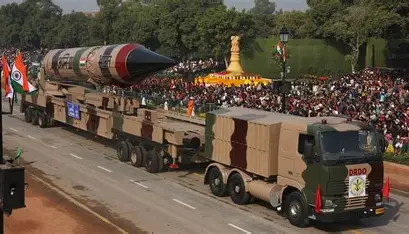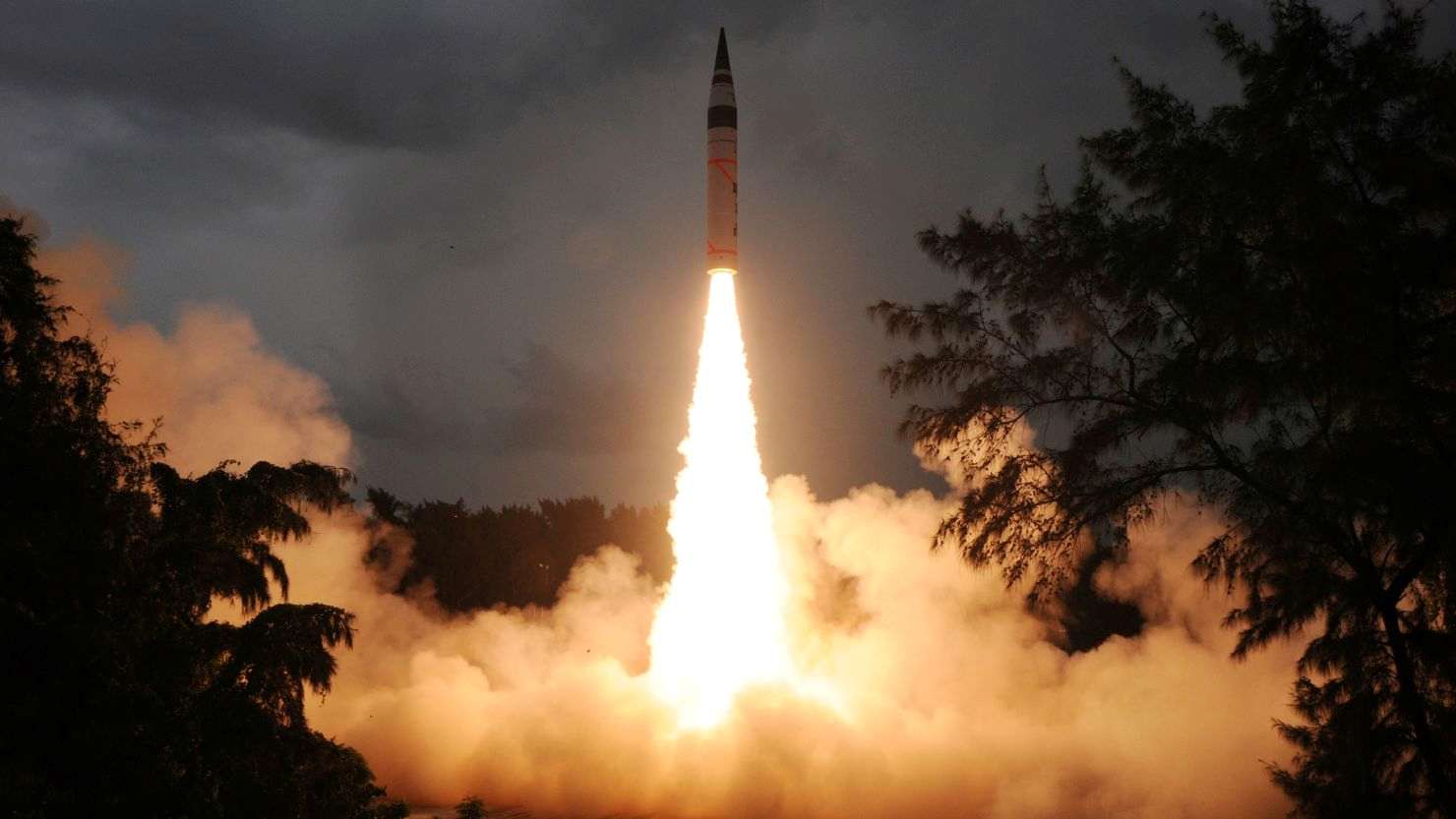This marked the first launch Agni-Prime missile from a rail-based mobile launcher, capable of moving anywhere on the railway network without restrictions.
DRDO and the Strategic Forces Command routinely test missiles of various ranges, but the 25 September Agni-Prime missile launch marked a historic milestone. This nuclear-capable intermediate-range ballistic missile was fired for the first time from a rail-based mobile launcher, towed by an Indian Railways locomotive.
Defence Minister Rajnath Singh described the launch as “first-of-its-kind” and congratulated DRDO, SFC, and the armed forces for elevating India into the select group of countries capable of on-the-move rail canisterised missile launches
The test demonstrates that India can now launch nuclear-capable missiles not only from traditional platforms like land silos, road-based launchers, aircraft, and submarines, but also from its railway network.
Rail-launch capability marks a key advancement in India’s deterrence, reducing enemy reaction time, increasing targeting complexity, and solidifying the credibility of India’s second-strike power under its declared No First Use policy.
What Is The Agni-Prime Missile ?
Agni Prime, also known as Agni-P, is the sixth missile in India’s Agni series. This two-stage, solid-fuel intermediate-range ballistic missile can strike targets up to 2,000 km away, covering key areas in Pakistan and large parts of China.
What makes Agni Prime special is that it is canisterised—stored and transported in a sealed tube—so it stays armed and ready to launch at a moment’s notice. Unlike older liquid-fuel missiles, which needed hours of preparation, the solid propellant drastically cuts reaction time.
Until now, Agni Prime traveled on road-mobile launchers, but Thursday’s historic test saw it fired from a rail-based platform for the first time. This rail mobility adds a new layer of stealth and flexibility, enhancing India’s strategic capabilities
Why India’s Agni-Prime missile on Rails Changes the Deterrence Game
The introduction of rail-launch capability significantly changes the strategic landscape of deterrence. India’s railway network—the fourth largest globally, stretching nearly 70,000 km—provides immense opportunities for dispersal and concealment. Missiles can now be positioned across the country, away from fixed silos or known military bases. They can be tucked into train tunnels, moved under the cover of regular rail traffic, and launched from unpredictable locations. This makes it exceedingly difficult for enemy satellites or reconnaissance systems to detect and preemptively target them.
As Defence Minister Rajnath Singh highlighted, the rail launcher enables cross-country mobility, rapid response, and low-profile deployment. In practical terms, this prevents adversaries from knowing the exact locations of Agni Prime units at any moment or assuming they have sufficient time to neutralise them before launch. Rail mobility enhances survivability: a missile mounted on a railcar can traverse the network discreetly, be staged at operationally advantageous points, and follow movement patterns that confuse enemy surveillance. To the casual observer, a missile-loaded carriage may appear to be a regular train coach, blending seamlessly into India’s vast rail traffic.
For India’s No First Use (NFU) doctrine, these capabilities are vital. Deterrence relies not on striking first, but on guaranteeing retaliation. Rail-mobile, canisterised missiles ensure that even in the event of an initial enemy strike, enough launchers will survive to respond within minutes.
Canisterisation, Mobility, and Rapid Response
The true strength of Agni Prime’s rail deployment comes from the synergy of canisterisation and mobility. In a canisterised setup, missiles are cold-launched directly from their tubes within minutes rather than hours. This drastically improves the survivability of India’s nuclear arsenal, shrinking the window for any potential pre-emptive strike against it.

Which Other Countries Have This Technology?..
India’s recent test puts it in an exclusive group of countries that have developed or deployed rail-mobile missile systems.
Soviet Union/Russia: During the 1980s, the USSR deployed the RT-23 Molodets ICBMs on specially designed trains. These systems were later dismantled under the Strategic Arms Reduction Treaty. Russia explored a new rail system called Barguzin but eventually shelved it to focus on hypersonic missile development.
United States: The US first considered rail-based deployment of Minuteman ICBMs in the 1950s and revisited the idea in the 1980s with the Peacekeeper Rail Garrison, which aimed to deploy 50 ICBMs on trains. The programme was ultimately cancelled after the end of the Cold War.
China: In 2016, China reportedly tested a rail-mobile variant of its DF-41 ICBM, one of its most advanced missile systems.
North Korea: In 2021, Pyongyang claimed it had launched short-range ballistic missiles from railway-based systems, releasing photos and videos to demonstrate the capability.
All these cases follow the same strategic rationale: rail mobility enhances missile survivability, making them harder to detect and target during a nuclear conflict.
Also read:-Aryan Khan की Bads of Bollywood पर किसने की शिकायत? FIR होगी?
